– By Narayani Khanna
Abstract
Indian leaders, in various meetings, have spoken about, debated upon and revised India’s Foreign Trade Policy (FTP). The country’s trade relations with other nations and regional groups have been subject to constant change but there has been a common thread in all these discussions which is to improve the ease of doing business by building trust among people worldwide so that they can come and invest in India as well as participate in India’s trade and industry.
In this research paper I will outline India’s trade relations with regional states and groups. It will briefly navigate India’s trade policy and its trade relations with various nations.
INDIA’S TRADE POLICY & ITS CHALLENGES:
India is one of the key economies in the global economic picture. Its policies in trade, reforms and its intrinsic economic capabilities have contributed towards India becoming one of the most sought after countries for foreign investments in the whole world. India’s technological and infrastructural capacity is increasing by the day which signals a positive future for the Indian trade and economic sector.
India’s foreign trade policy has a quite interesting feature of continuity, where it pursues extraordinary modifications in the manner of a series of well timed small changes. India’s huge potential clashes with its profound and chronic challenges when it comes to analysing the nation’s economic growth.With the country’s recent soaring economic growth rates one anticipates that India will be able to increase income for 1.1 billion people and the expectations are that at the same time it will also provide stability and growth to the global economic condition. Even after such promising figures and a bright foreseeable future, India remains the largest ground of poverty on Earth with around 300 million of its people living in poverty and 800 million people sustaining on less than $2 per day, if measured according to the international measure of poverty.1 Approximately two-thirds of the Indian population lives in rural areas and half of its total populations is engaged in the agricultural sector in which growth has not gone above 3 percent in the last decade. On the other hand, India’s service sector has grown rapidly in the last few years but it still continues to employ less than 1 percent of India’s working population.
As India is more and more deeply engaging in the world’s economy, the policy makers in India are constantly facing the challenge of formulating trade policies keeping in mind the diverse people and economy of the Indian subcontinent. Currently, India’s trade policy commitments through organisations like the World Trade Organisation (WTO) are moderately limited which leaves wide policy discretion in the hands of its policy makers. India is entering into an unseen course by signing a new multilateral trade agreement, various regional and bilateral trade pacts, where whatever decisions it takes will most likely restrict its existing policy and impact significantly on its economy’s growth and evolution.
INDIA – EUROPEAN UNION RELATIONS:
The European Union (EU) is a bloc of 27 countries and is currently India’s largest partner in trade. India-EU diplomatic relations trace their roots back to the 1960s when India was also one of the first countries to have established a diplomatic tie with the European Economic Community. A number of summits and dialogues have taken place between the two since then involving talks to strengthen their relations in economic and political spheres in order to enhance trade and investment. According to the European Commission, “India is an important trade and investment partner for the European Union”2. India began negotiations for a free trade agreement with the EU in June 2007. India and the EU have accounted for a trade of 80 billion euros worth in goods in 2019.
India and the EU are also in the middle of negotiations for a bilateral broad-based Trade and Investment Agreement which have been happening since 2007, and once implemented, it will remarkably enhance their commercial relationship.
The India-EU Joint Commission dealing with economic and commercial issues meets annually, as do its three Sub-Commissions on Trade, Economic Cooperation and Development Cooperation.
India and the EU have signed multiple bilateral agreements and MoUs in various fields including Science and Technology, Multilingualism, Civil Aviation, Nuclear Fusion Energy, Culture, Research and Innovation, and many more.
The two also share some common grounds and values like both are ‘unions of diversity’ and share the ideologies of rule of law, human rights and democracy. India and the EU also contribute towards making the world a more stable, secure and green one. India and the EU have a common roadmap to strengthen their strategic relationship over the next five years. This roadmap is known as ‘India-EU Strategic Partnership: A Roadmap to 2025’.
India and the EU can further widen their strategic value chains and significantly reduce economic dependency, especially on China, through enhanced business cooperation.
INDIA – UNITED STATES OF AMERICA RELATIONS:
India and the United States of America (USA) continue to foster a strong trade, diplomatic and strategic partnership. This partnership has a strong foundation of trust, democratic values, respect, equal treatment of all its citizens and the rule of law. The two nations hold a 2+2 Ministerial Dialogue from time to time where they talk about their partnership’s strategic position and reaffirm their status of past and future cooperation. The two are cooperate together at multiple multilateral organisations such as the United Nations, G-20, Association of Southeast Asian Nations (ASEAN) Regional Forum, International Monetary Fund (IMF), World Bank, World Trade Organisation (WTO), among others.
Indian-American diaspora, which is about four million strong, is the proof of the strong ties between the two countries seen even beyond their trade relationship. The trade relationship between the two nations is expanding rapidly and is fair and equal for both. India and USA’s overall bilateral trade in goods and services crossed $149 billion in 2019, which is a sign of a healthy trade partnership between the two. Energy exports are an important area of growth in the trade relationship, where India’s purchase of crude oil from the US has increased significantly. Though India- US foreign direct investment (FDI) is limited, it is seeing growth recently.
Furthermore, India and the USA have opposing opinions in the WTO. The USA also often blames India for the restricting growth of the WTO in certain areas. Talks and debates continue to happen constantly where the two nations try to resolve their issues and find common ground in order to nurture growth, prosperity and healthy trade relations between them for smooth transactions in the future.
INDIA – CHINA RELATIONS:
India and China witnessed rapid growth in their bilateral trade since the beginning of the century and China subsequently emerged as the largest goods trading partner of India by 2008. This relationship saw a steep downhill towards the end of last year (2020), when India’s overall trade with China fell remarkably as compared to 2019.
While India’s increasing trade with China has made goods available to us at low costs, at the same time it has also led India into its single biggest trade deficit with any country. The problem of trade deficit with China is twofold, one is the concern that comes with the actual size of the deficit and the other is the fact that this disparity has been increasing continuously year after year.
The first nine months of the year 2020-21 saw a reduction of around 30 percent in India’s trade deficit with China due to COVID-19 and the overall reduction in bilateral trade. During this period India’s exports to China increased which led to a reduction in trade deficit.
Even though India and China individually are one of the top investment choices for the rest of the world, investment flows between the two are yet to catch up.
INDIA – ASSOCIATION OF SOUTH-EAST ASIAN NATIONS (ASEAN) RELATIONS:
Association of South-East Asian Nations (ASEAN) is India’s fourth largest trading partner. India’s focus has always been to strengthen its relationship with ASEAN. India’s shift towards liberalisation of its trade policy and economy, and constant changes in the global economic and political landscape has resulted in its strong relationship with ASEAN.
India’s continuous efforts towards gaining economic space led to the ‘Look East Policy’ which has now matured into an action oriented version of it called ‘Act East Policy’. This policy is a diplomatic initiative by India hoping to gain cooperation over economic, strategic and cultural areas from Asia-Pacific countries and regional groups like ASEAN. It aims at gaining economic independence.
ASEAN and India’s relationship with it forms a major pillar of India’s latest foreign policy and it also supports its Act East Policy. In 2012, India – ASEAN relationship saw a natural progression where ties between the two matured into a Strategic Partnership. As of today, India and ASEAN have a total of 30 Dialogue Mechanisms in place covering a wide number of sectors of interest.
The two are constantly looking forward to escalating their engagement with each other especially in the fields of trade and investment, which is already seeing a steady growth recently.
INDIA – SOUTH ASIAN ASSOCIATION OF REGIONAL COOPERATION (SAARC) RELATIONS:
A number of studies show that India has been trading with SAARC members at an outrageously high rate in contrast to its trade with countries like Saudi Arabia, US, UK and Germany. This scenario unfolds the true nature of trade relations between India and SAARC members, especially Pakistan.
The cross-country coefficient of India with SAARC countries has been negative due to unexplored export market potential and exorbitant trade costs. Due to border issues with Pakistan, high tariffs and a huge untapped trade potentia, these figures with Pakistan were worse. With Nepal and Sri Lanka, India needs to expand its exports as their coefficients were the lowest, which also indicates there is further scope for expansion of trade with these nations. UAE and Singapore are among those SAARC countries with whom India has high trade transactions as its exports are high to these nations.
India supports a number of initiatives in the SAARC framework to get greater cooperation over diverse sectors from its members. At the same time India is also frustrated by being the only member, almost every time, investing in ideas and initiating talks in the SAARC forum. In order to achieve maximum positive results out of this strategic partnership, every member has to do their bit and be proactively in the initiatives taken within the cooperative forum.
References
1 S Polaski, A Ganesh Kumar, S McDonald, M Panda & S Robinson, India’s Trade Policy Choices, Carnegie Endowment for International Peace.
2 Official website of the European Commission, Trade/ Policy/ Countries and Regions/ India.



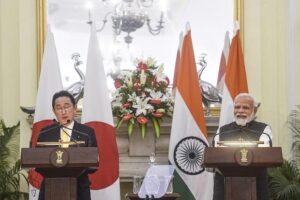

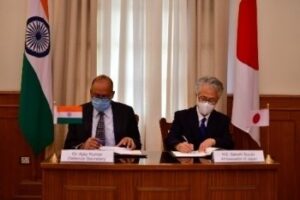
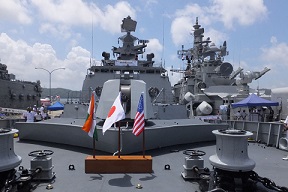
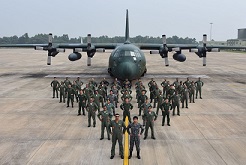



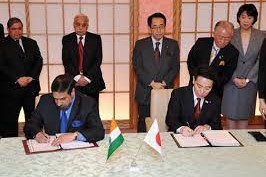

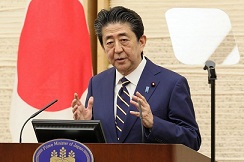
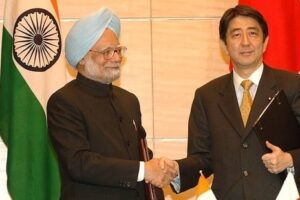

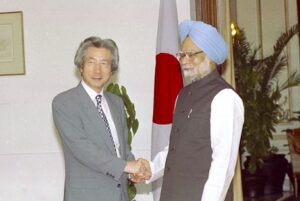
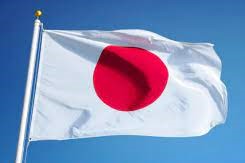
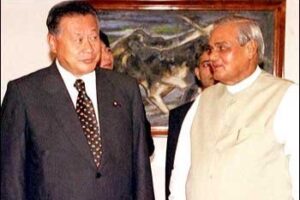
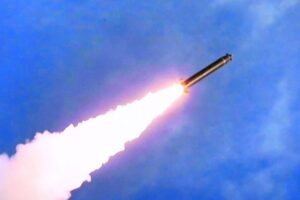




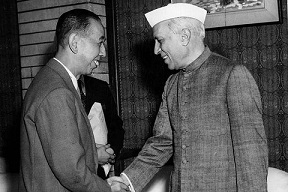
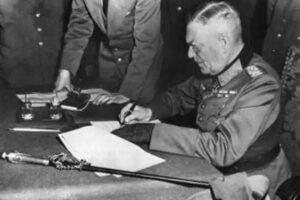


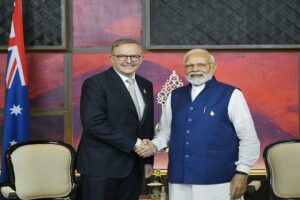



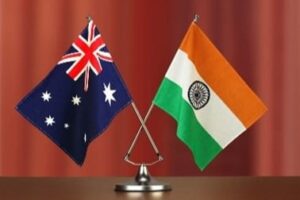
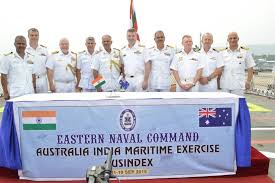

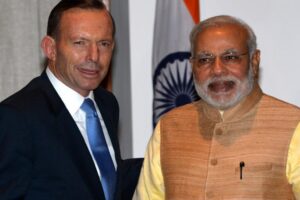
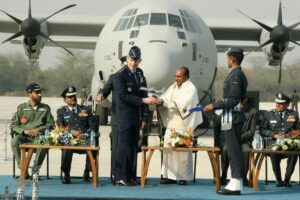




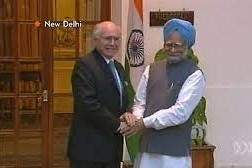
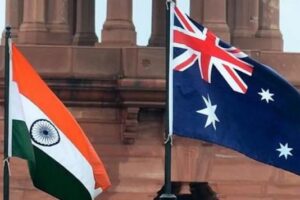
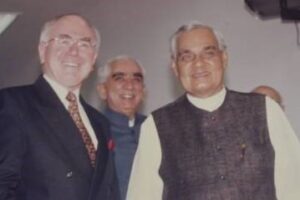

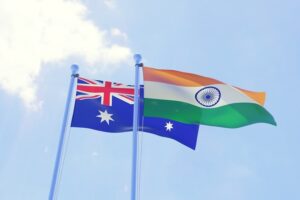

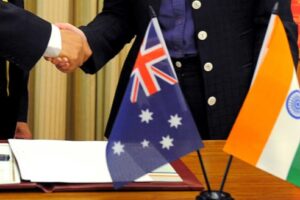

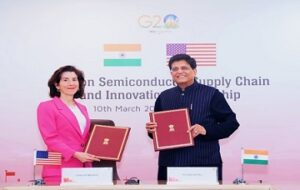
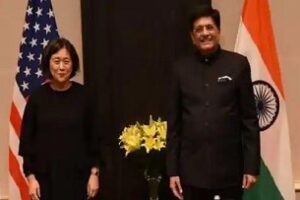
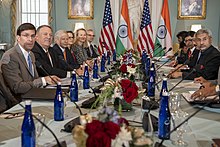
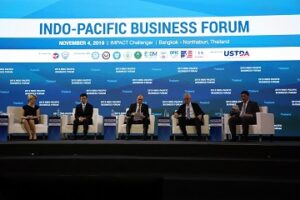
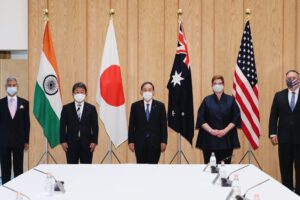

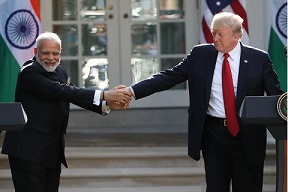
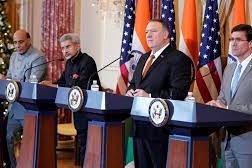
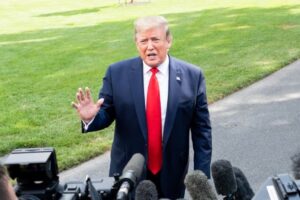
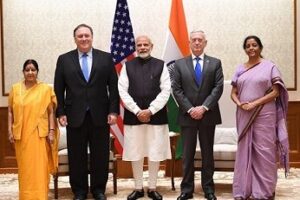
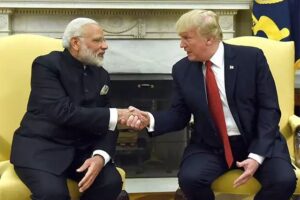
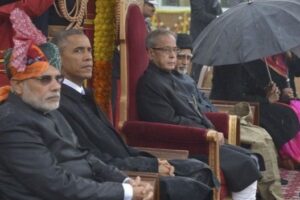

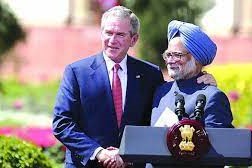
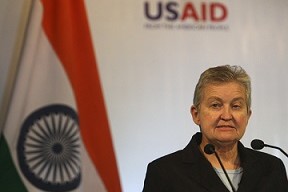
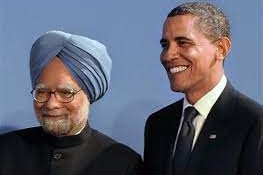
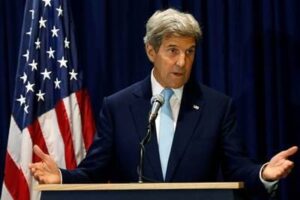

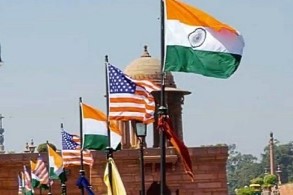
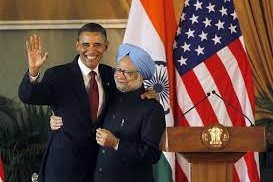
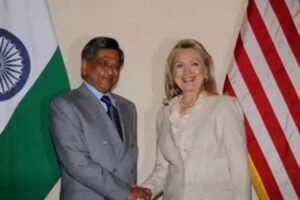
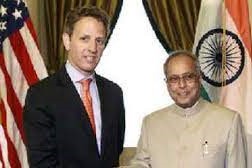
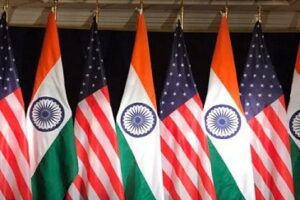
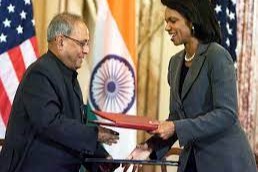

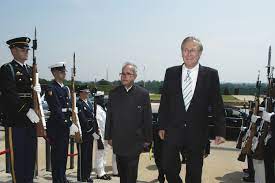

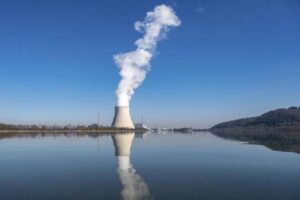
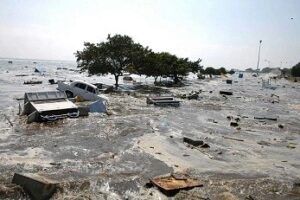
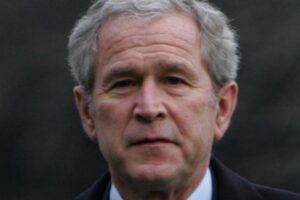
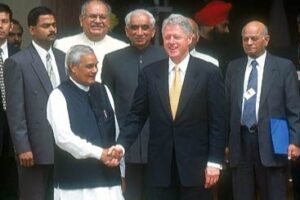
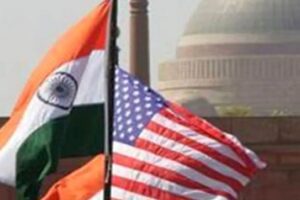
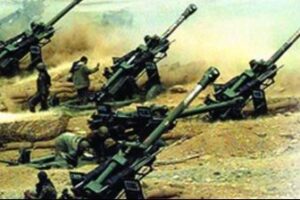
 onducted a total of five underground nuclear tests, breaking a 24-year self-imposed moratorium on nuclear testing. Pakistan followed, claiming 5 tests on May 28, 1998, and an additional test on May 30. The unannounced tests created a global storm of criticism, as well as a serious setback for decades of U.S. nuclear nonproliferation efforts in South Asia. On May 13, 1998, President Clinton imposed economic and military sanctions on India, mandated by Section 102 of the Arms Export Control Act (AECA), and applied the same sanctions to Pakistan on May 30. Some effects of the sanctions on India included: termination of $21 million in FY1998 economic development assistance; postponement of $1.7 billion in lending by the International Financial Institutions (IFI), as supported by the Group of Eight (G-8) leading industrial nations; prohibition on loans or credit from U.S. banks to the government of India; and termination of Foreign Military Sales under the Arms Export Control Act. Humanitarian assistance, food, or other agricultural commodities are excepted from sanctions under the law.
onducted a total of five underground nuclear tests, breaking a 24-year self-imposed moratorium on nuclear testing. Pakistan followed, claiming 5 tests on May 28, 1998, and an additional test on May 30. The unannounced tests created a global storm of criticism, as well as a serious setback for decades of U.S. nuclear nonproliferation efforts in South Asia. On May 13, 1998, President Clinton imposed economic and military sanctions on India, mandated by Section 102 of the Arms Export Control Act (AECA), and applied the same sanctions to Pakistan on May 30. Some effects of the sanctions on India included: termination of $21 million in FY1998 economic development assistance; postponement of $1.7 billion in lending by the International Financial Institutions (IFI), as supported by the Group of Eight (G-8) leading industrial nations; prohibition on loans or credit from U.S. banks to the government of India; and termination of Foreign Military Sales under the Arms Export Control Act. Humanitarian assistance, food, or other agricultural commodities are excepted from sanctions under the law. 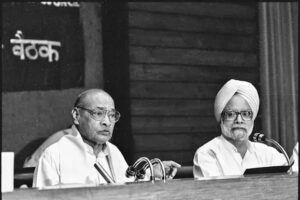
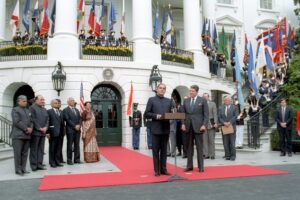
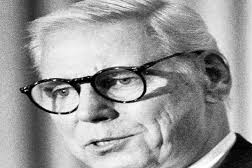
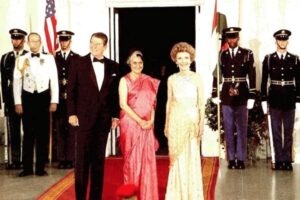
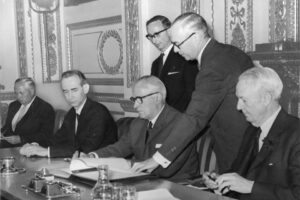
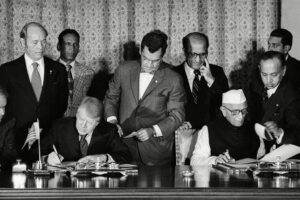
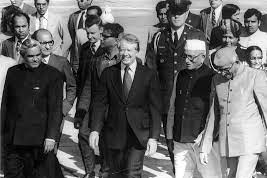

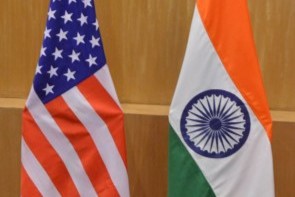

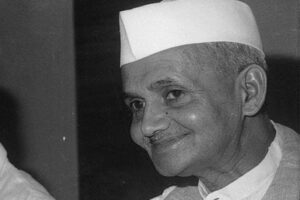

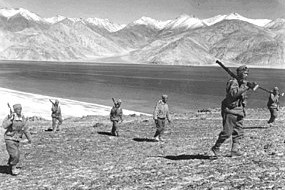
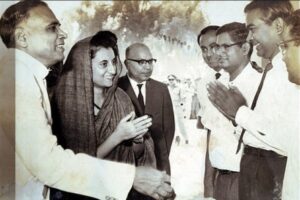
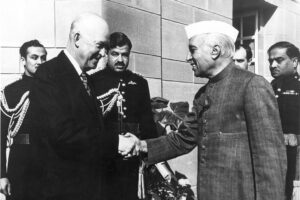

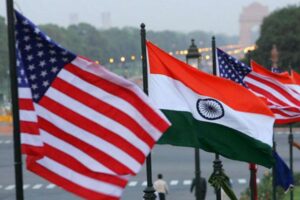
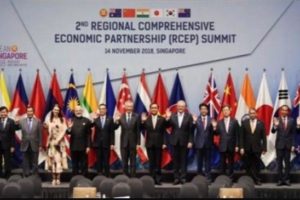 The first ministerial level meeting of QUAD was held on the sidelines of the United Nations General Assembly in New York. Before this, the QUAD had
The first ministerial level meeting of QUAD was held on the sidelines of the United Nations General Assembly in New York. Before this, the QUAD had AusIndEx is an exercise between India and Australia which was first held in 2015.The Australian
AusIndEx is an exercise between India and Australia which was first held in 2015.The Australian 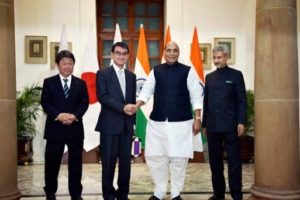



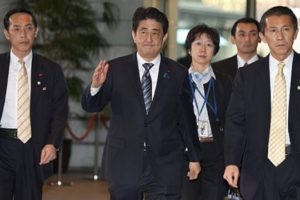
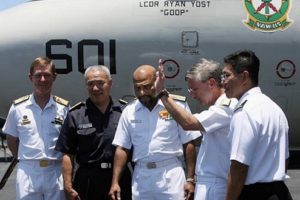
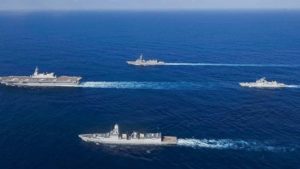

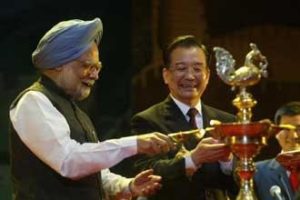 On recommendations of the Japanese government, the four countries met at Manila, Philippines for ASEAN Regional Forum (ARF) originally, but also ended up having a meeting of what we call the first meeting of four nation states on issues of
On recommendations of the Japanese government, the four countries met at Manila, Philippines for ASEAN Regional Forum (ARF) originally, but also ended up having a meeting of what we call the first meeting of four nation states on issues of 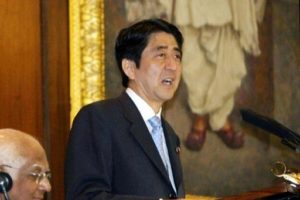 On his official visit to India, Japanese PM Mr. Shinzo Abe reinforced the ties of two nations, i.e., Japan and India with his famous speech about
On his official visit to India, Japanese PM Mr. Shinzo Abe reinforced the ties of two nations, i.e., Japan and India with his famous speech about  In 2007, Japanese President Shinzo Abe resigned from his post citing health reasons. This had a significant impact on QUAD as he was the architect & advocate of QUAD. His successor, Yasuo Fukuda, did not take up QUAD with such zeal leading to dormancy of the forum. (
In 2007, Japanese President Shinzo Abe resigned from his post citing health reasons. This had a significant impact on QUAD as he was the architect & advocate of QUAD. His successor, Yasuo Fukuda, did not take up QUAD with such zeal leading to dormancy of the forum. (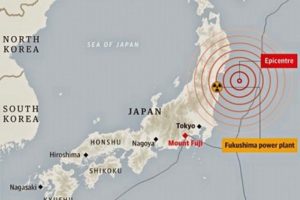 Japan earthquake and tsunami of 2011, also called Great Sendai Earthquake or Great Tōhoku Earthquake, was a 9.0 magnitude earthquake which struck below the floor of the Western Pacific at 2:49 PM. The powerful earthquake affected the northeastern coast of Honshu, Japan’s main island, and also initiated a series of large tsunami waves that devastated coastal areas of Japan, which also led to a major nuclear accident. Japan received aid from India, US, Australia as well as other countries. US Navy aircraft carrier was dispatched to the area and Australia sent search-and-rescue teams.
Japan earthquake and tsunami of 2011, also called Great Sendai Earthquake or Great Tōhoku Earthquake, was a 9.0 magnitude earthquake which struck below the floor of the Western Pacific at 2:49 PM. The powerful earthquake affected the northeastern coast of Honshu, Japan’s main island, and also initiated a series of large tsunami waves that devastated coastal areas of Japan, which also led to a major nuclear accident. Japan received aid from India, US, Australia as well as other countries. US Navy aircraft carrier was dispatched to the area and Australia sent search-and-rescue teams. 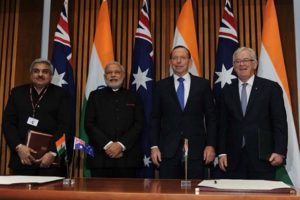 India and Australia signed the
India and Australia signed the  The India-Japan Agreement for Cooperation in the Peaceful Uses of Nuclear Energy was signed on 11 November, 2016 and came into force on 20 July, 2017 which was representative of strengthening ties between India and Japan. Diplomatic notes were exchanged between Dr. S. Jaishankar and H.E. Mr. Kenji Hiramatsu, Ambassador of Japan to India. (
The India-Japan Agreement for Cooperation in the Peaceful Uses of Nuclear Energy was signed on 11 November, 2016 and came into force on 20 July, 2017 which was representative of strengthening ties between India and Japan. Diplomatic notes were exchanged between Dr. S. Jaishankar and H.E. Mr. Kenji Hiramatsu, Ambassador of Japan to India. (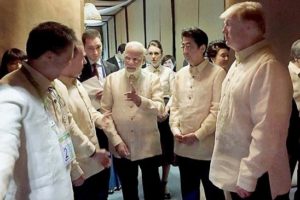 The foreign ministry
The foreign ministry The Officials of QUAD member countries met in Singapore on November 15, 2018 for consultation on regional & global issues of common interest. The main discussion revolved around connectivity, sustainable development, counter-terrorism, maritime and cyber security, with the view to promote peace, stability and prosperity in the
The Officials of QUAD member countries met in Singapore on November 15, 2018 for consultation on regional & global issues of common interest. The main discussion revolved around connectivity, sustainable development, counter-terrorism, maritime and cyber security, with the view to promote peace, stability and prosperity in the 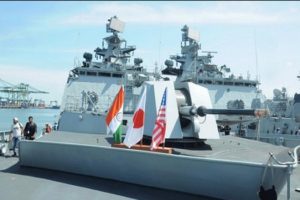 The 23rd edition of trilateral Malabar maritime exercise between India, US and Japan took place on 26 September- 04 October, 2019 off the coast of Japan.
The 23rd edition of trilateral Malabar maritime exercise between India, US and Japan took place on 26 September- 04 October, 2019 off the coast of Japan.  After the first ministerial level meeting of QUAD in September, 2019, the senior officials of US, Japan, India and Australia again met for consultations in Bangkok on the margins of the East Asia Summit. Statements were issued separately by the four countries. Indian Ministry of External Affairs said “In statements issued separately by the four countries, MEA said, “proceeding from the strategic guidance of their Ministers, who met in New York City on the sidelines of the UN General Assembly recently, the officials exchanged views on ongoing and additional practical cooperation in the areas of connectivity and infrastructure development, and security matters, including counterterrorism, cyber and maritime security, with a view to promoting peace, security, stability, prosperity in the Indo-Pacific region.”
After the first ministerial level meeting of QUAD in September, 2019, the senior officials of US, Japan, India and Australia again met for consultations in Bangkok on the margins of the East Asia Summit. Statements were issued separately by the four countries. Indian Ministry of External Affairs said “In statements issued separately by the four countries, MEA said, “proceeding from the strategic guidance of their Ministers, who met in New York City on the sidelines of the UN General Assembly recently, the officials exchanged views on ongoing and additional practical cooperation in the areas of connectivity and infrastructure development, and security matters, including counterterrorism, cyber and maritime security, with a view to promoting peace, security, stability, prosperity in the Indo-Pacific region.” US 2+2 Ministerial Dialogue was held on 18 December, 2019, in Washington DC. Secretary of State Michael R. Pompeo and Secretary of Defense Mark T. Esper will host Indian Minister of External Affairs Dr. S. Jaishankar and Minister of Defense Shri Rajnath Singh. The discussion focussed on deepening bilateral strategic and defense cooperation, exchanging perspectives on global developments, and our shared leadership in the Indo-Pacific region.The two democracies signed the Industrial Security Annex before the 2+2 Dialogue. Assessments of the situation in Afghanistan, Pakistan, Nepal, Sri Lanka, and the Indian Ocean region in general were shared between both countries. (
US 2+2 Ministerial Dialogue was held on 18 December, 2019, in Washington DC. Secretary of State Michael R. Pompeo and Secretary of Defense Mark T. Esper will host Indian Minister of External Affairs Dr. S. Jaishankar and Minister of Defense Shri Rajnath Singh. The discussion focussed on deepening bilateral strategic and defense cooperation, exchanging perspectives on global developments, and our shared leadership in the Indo-Pacific region.The two democracies signed the Industrial Security Annex before the 2+2 Dialogue. Assessments of the situation in Afghanistan, Pakistan, Nepal, Sri Lanka, and the Indian Ocean region in general were shared between both countries. (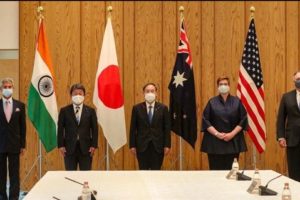 The foreign ministers of QUAD continued their discussions from the last ministerial level meeting in 2019, on 6 October, 2020. While there was no joint statement released, all countries issued individual readouts. As per the issue readout by India, the discussion called for a coordinated response to the challenges including financial problems emanating from the pandemic, best practices to combat Covid-19, increasing the resilience of supply chains, and enhancing access to affordable vaccines, medicines and medical equipment. There was also a focus on maintaining stability in the Indo-Pacific region amidst growing tensions. Australian media release mentions “We emphasised that, especially during a pandemic, it was vital that states work to ease tensions and avoid exacerbating long-standing disputes, work to counter disinformation, and refrain from malicious cyberspace activity. Ministers reiterated that states cannot assert maritime claims that are inconsistent with international law, particularly the United Nations Convention on the Law of the Sea (UNCLOS).”
The foreign ministers of QUAD continued their discussions from the last ministerial level meeting in 2019, on 6 October, 2020. While there was no joint statement released, all countries issued individual readouts. As per the issue readout by India, the discussion called for a coordinated response to the challenges including financial problems emanating from the pandemic, best practices to combat Covid-19, increasing the resilience of supply chains, and enhancing access to affordable vaccines, medicines and medical equipment. There was also a focus on maintaining stability in the Indo-Pacific region amidst growing tensions. Australian media release mentions “We emphasised that, especially during a pandemic, it was vital that states work to ease tensions and avoid exacerbating long-standing disputes, work to counter disinformation, and refrain from malicious cyberspace activity. Ministers reiterated that states cannot assert maritime claims that are inconsistent with international law, particularly the United Nations Convention on the Law of the Sea (UNCLOS).”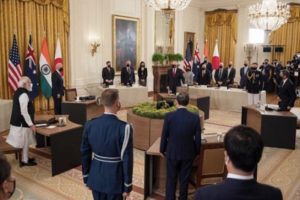 On September 24, President Biden hosted Prime Minister Scott Morrison of Australia, Prime Minister Narendra Modi of India, and Prime Minister Yoshihide Suga of Japan at the White House for the first-ever in-person Leaders’ Summit of the QUAD. The leaders released a Joint Statement which summarised their dialogue and future course of action. The regional security of the Indo-Pacific and strong confidence in the ASEAN remained on the focus along with response to the Pandemic.
On September 24, President Biden hosted Prime Minister Scott Morrison of Australia, Prime Minister Narendra Modi of India, and Prime Minister Yoshihide Suga of Japan at the White House for the first-ever in-person Leaders’ Summit of the QUAD. The leaders released a Joint Statement which summarised their dialogue and future course of action. The regional security of the Indo-Pacific and strong confidence in the ASEAN remained on the focus along with response to the Pandemic. 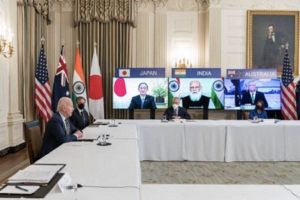 The QUAD Vaccine Partnership was announced at the first QUAD Summit on 12 March 2021 where QUAD countries agreed to deliver 1.2 billion vaccine doses globally. The aim was to expand and finance vaccine manufacturing and equipping the Indo-Pacific to build resilience against Covid-19. The launch of a senior-level QUAD Vaccine Experts Group, comprised of top scientists and officials from all QUAD member governments was also spearheaded.
The QUAD Vaccine Partnership was announced at the first QUAD Summit on 12 March 2021 where QUAD countries agreed to deliver 1.2 billion vaccine doses globally. The aim was to expand and finance vaccine manufacturing and equipping the Indo-Pacific to build resilience against Covid-19. The launch of a senior-level QUAD Vaccine Experts Group, comprised of top scientists and officials from all QUAD member governments was also spearheaded.  Although the Tsunami Core group had to be disbanded on fulfilment of its purpose, however the quadrilateral template that formed remained intact as a successful scaffolding of four countries, as stated by authors Patrick Gerard Buchan and Benjamin Rimland in their diplomatic brief about QUAD ( you can access the brief at
Although the Tsunami Core group had to be disbanded on fulfilment of its purpose, however the quadrilateral template that formed remained intact as a successful scaffolding of four countries, as stated by authors Patrick Gerard Buchan and Benjamin Rimland in their diplomatic brief about QUAD ( you can access the brief at 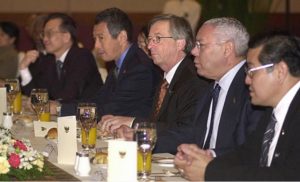 Secretary of State Colin Powell stated that the Core Tsunami Group was to be disbanded and folded and clubbed with the broader United Nations led Relief Operations. In a Tsunami Relief Conference in Jakarta, Secretary Powell stated that
Secretary of State Colin Powell stated that the Core Tsunami Group was to be disbanded and folded and clubbed with the broader United Nations led Relief Operations. In a Tsunami Relief Conference in Jakarta, Secretary Powell stated that 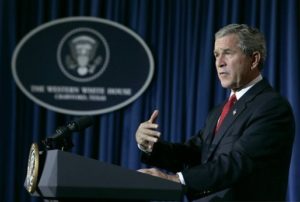 Soon after the Earthquake and Tsunami crisis, humanitarian reliefs by countries, viz., US, India, Japan, and Australia started to help the 13 havoc-stricken countries. The US initially promised $ 35 Millions in aid. However, on 29
Soon after the Earthquake and Tsunami crisis, humanitarian reliefs by countries, viz., US, India, Japan, and Australia started to help the 13 havoc-stricken countries. The US initially promised $ 35 Millions in aid. However, on 29 At 7:59AM local time, an earthquake of 9.1 magnitude (undersea) hit the coast of Sumatra, an Indonesian island. As a result of the same, massive waves of Tsunami triggered by the earthquake wreaked havoc for 7 hours across the Indian Ocean and to the coastal areas as far away as East Africa. The infamous Tsunami killed around 225,000 people, with people reporting the height of waves to be as high as 9 metres, i.e., 30 feet. Indonesia, Srilanka, India, Maldives, Thailand sustained horrendously massive damage, with the death toll exceeding 200,000 in Northern Sumatra’s Ache province alone. A great many people, i.e., around tens of thousands were found dead or missing in Srilanka and India, mostly from Andaman and Nicobar Islands of Indian territory. Maldives, being a low-lying country, also reported casualties in hundreds and more, with several non-Asian tourists reported dead or missing who were vacationing. Lack of food, water, medicines burgeoned the numbers of casualties, with the relief workers finding it difficult to reach the remotest areas where roads were destroyed or civil war raged. Long-term environmental damage ensued too, as both natural and man-made resources got demolished and diminished.
At 7:59AM local time, an earthquake of 9.1 magnitude (undersea) hit the coast of Sumatra, an Indonesian island. As a result of the same, massive waves of Tsunami triggered by the earthquake wreaked havoc for 7 hours across the Indian Ocean and to the coastal areas as far away as East Africa. The infamous Tsunami killed around 225,000 people, with people reporting the height of waves to be as high as 9 metres, i.e., 30 feet. Indonesia, Srilanka, India, Maldives, Thailand sustained horrendously massive damage, with the death toll exceeding 200,000 in Northern Sumatra’s Ache province alone. A great many people, i.e., around tens of thousands were found dead or missing in Srilanka and India, mostly from Andaman and Nicobar Islands of Indian territory. Maldives, being a low-lying country, also reported casualties in hundreds and more, with several non-Asian tourists reported dead or missing who were vacationing. Lack of food, water, medicines burgeoned the numbers of casualties, with the relief workers finding it difficult to reach the remotest areas where roads were destroyed or civil war raged. Long-term environmental damage ensued too, as both natural and man-made resources got demolished and diminished.
No responses yet